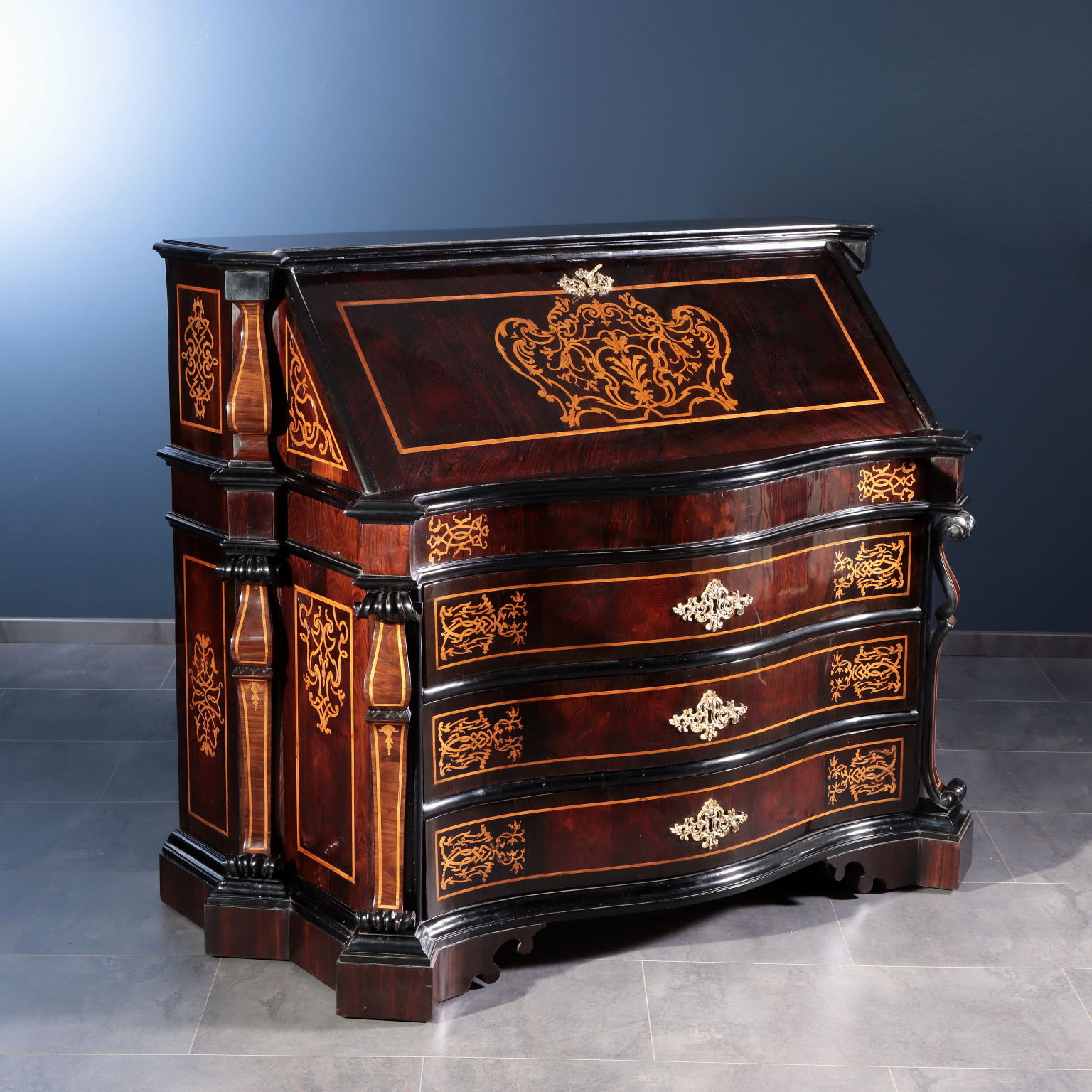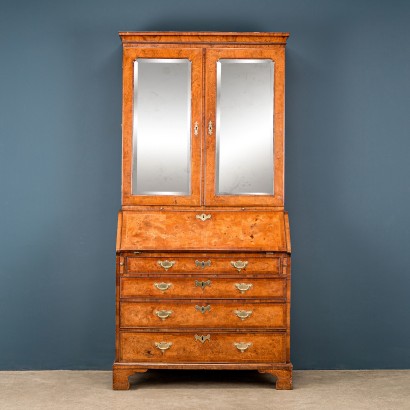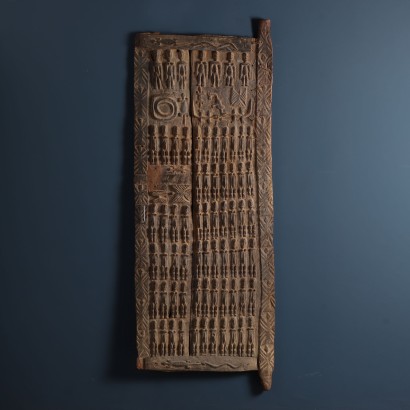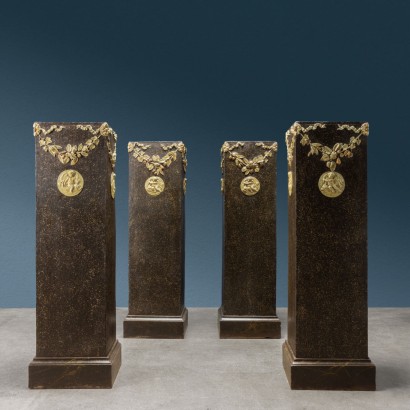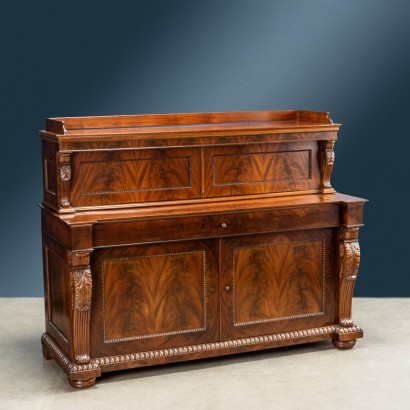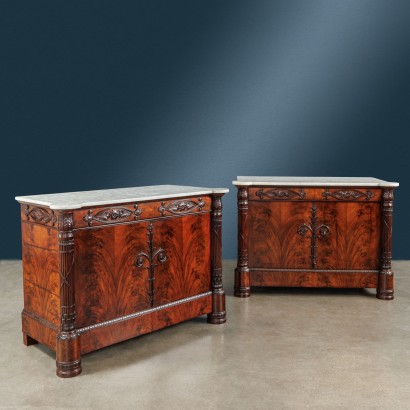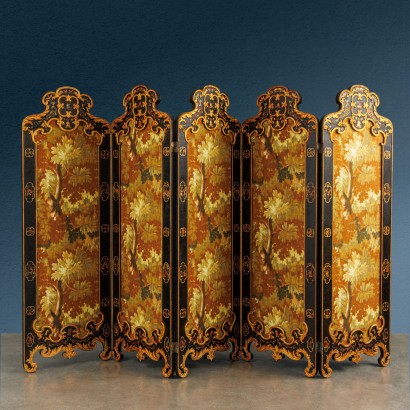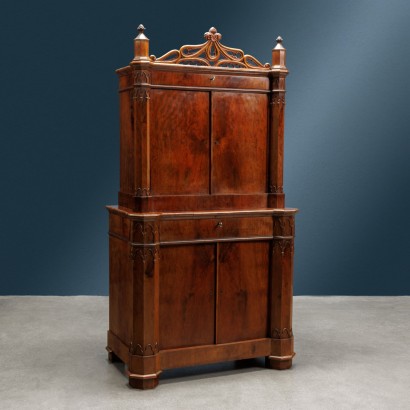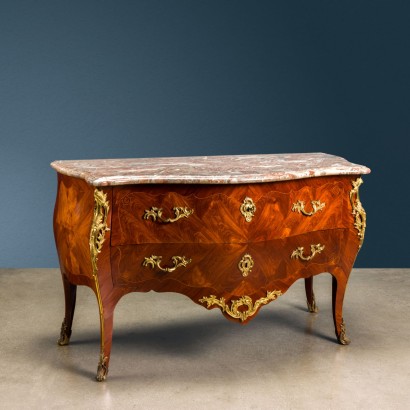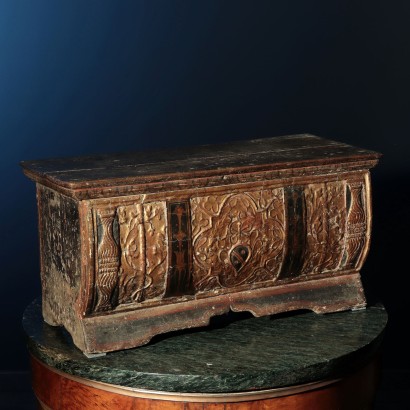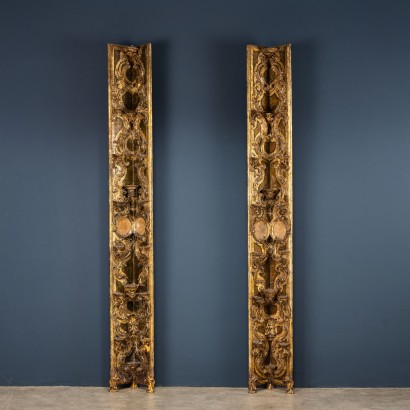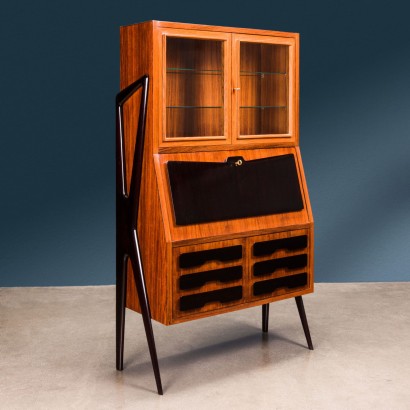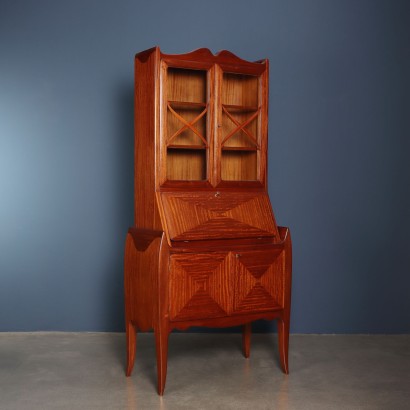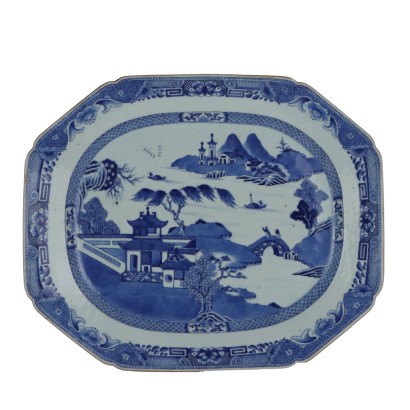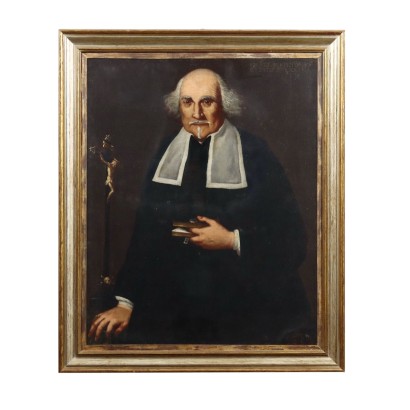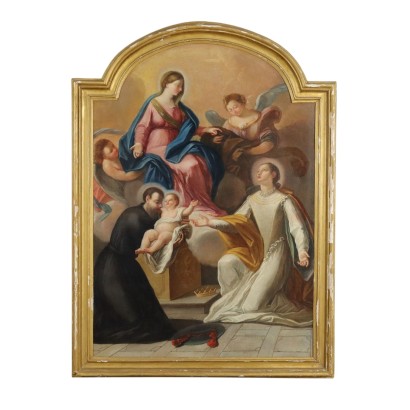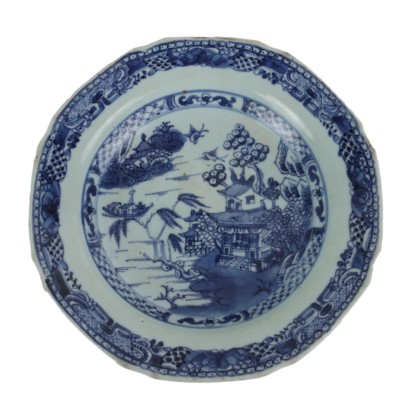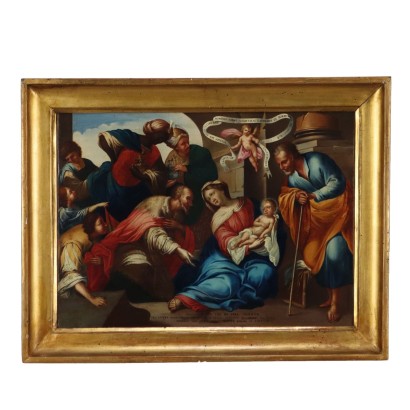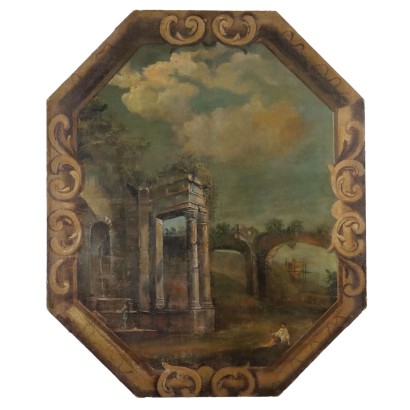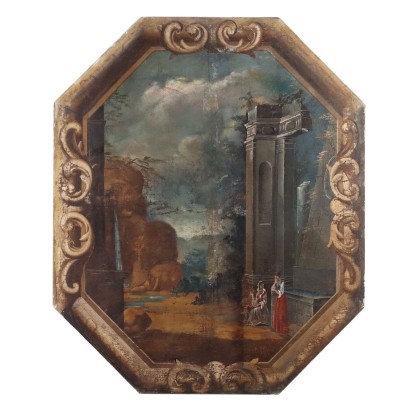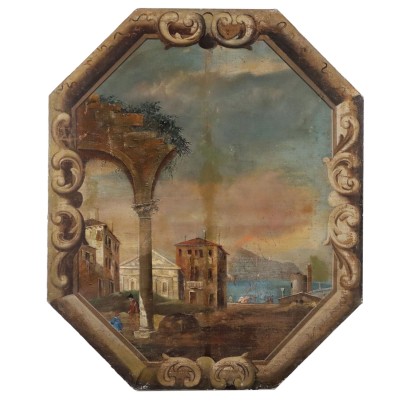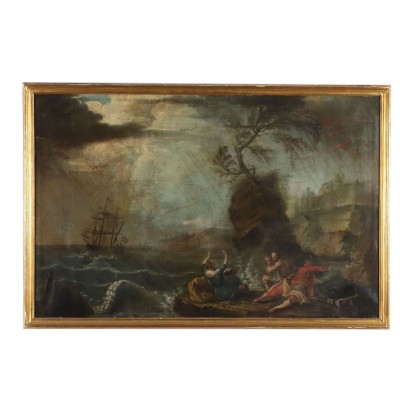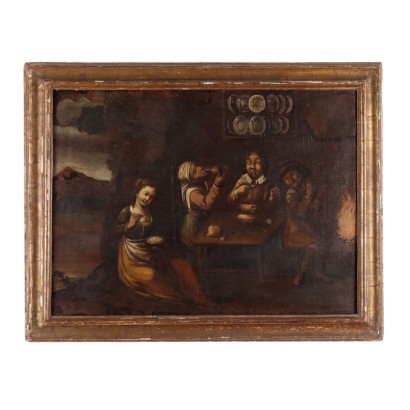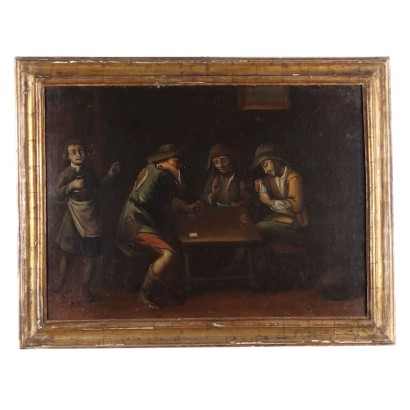Drop-leaf chest of drawers, Rome, second quarter of the 18th century
Features
Style: Baroque (1630-1730)
Age: 18th Century / 1701 - 1800
Origin: Roma, Italy
Main essence: Rosewood
Description
Drop-down chest of drawers, consisting of three drawers inserted into the wavy front surmounted by a flap door. The piece of furniture, built with architectural care, has pierced and carved pilasters with opposing curls, two placed on the front uprights at 45 degrees and two more in the middle of the sides where the piece of furniture widens through a constructive leavening. The piece of furniture is completely veneered in rosewood and inlaid on the surface in "yellow angel" as this exotic maple-like wood was indicated in the inventories, the motifs are intertwining phytomorphic typical of the decoration of the time and show the engraving that still shadows and enriches the inlay. The flap door hides a cabinet with 5 drawers, one of which is central and a compartment concealing a compartment with 5 secret drawers, the entire internal surface is always veneered in rosewood with inlays in Angioilino yellow and some backgrounds in negative, dark on light . The carved parts of the piece of furniture, frames and curls are ebonized, the feet end in a shelf at the front. The interiors are in poplar and on some drawer bottoms you can see traces of test drawings for the inlays. Replaced hardware as well as the vents, in gilded bronze are a non-contemporary addition.
Product Condition:
Product in good condition, with small signs of wear.
Dimensions (cm):
Height: 115
Width: 140
Depth: 68
Additional Information
Notes historical bibliographic
The very architectural structure of the furniture, as well as the inlaid motifs with these intertwining, of oriental taste, are typical of the late Roman Baroque taste. Especially in the non-parade furnishings and therefore not related to Roman intaglio, the influence of Dutch inlayers is felt, both in the Berrain-style designs but also in the use of exotic woods. Alvar Gonzales Palacios, in describing a limelight very similar to this, places it in the first decades of the 18th century, also referring to a piece of furniture dated 1758 which, while retaining the same type of inlay, has already Rococo shapes. The bedside table in question is fortunately signed and dated, Giovan Battista Barnabei 1758. It has a high and rounded leg, but the inlay is very close to that of the piece of furniture in question. Enrico Colle also publishes a similar limelight and a kneeler with the same architectural movement and the same inlaid motifs. Similar in architectural layout there are two double-bodied pieces of furniture, a trumeau in the Colarossi collection and one in the Pallavicini collection, the latter hypothetically attributed to the workshop of Domenico Calcagni, cabinetmaker active for the Pallavicinis in 1743. The various comparisons lead us to believe therefore that the piece of furniture in question was made in the second quarter of the 18th century.Style: Baroque (1630-1730)
Read more
The term derives from the Spanish barrueco phoneme or Portuguese barroco and literally means "shapeless pearl".
Already around the middle of the eighteenth century in France it was synonymous with uneven, irregular, bizarre, while in Italy the term was of Medieval memory and indicated a figure of the syllogism, an abstraction of thought.
This historical period was identified with the derogatory term baroque, recognizing in it extravagance and contrast with the criteria of harmony and expressive rigor to which it was intended to return under the influence of Greco-Roman art and the Italian Renaissance.
Baroque, seventeenth-century and seventeenth-century were synonymous with bad taste.
As regards furniture, freedom of ideation, need for pomp and virtuosity gave rise to a synergy destined to produce unsurpassed masterpieces.
The materials used were worthy of competing with the most astonishing tales of Marco Polo: lapis lazuli, malachite, amber, ivory, tortoiseshell, gold, silver, steel, precious wood essences and more dressed the furnishings that in shape and imagination virtually gave life to the Arabian Nights of many of our powerful people.
Typical of the period were load-bearing or accessory parts resolved with twisted column motifs, clearly inspired by Bernini's canopy of St. Peter's, parts with rich sculptural carving in high relief and even in the round within a vortex of volutes, scrolls and spirals, curved and broken profiles, cymatiums agitated by gables of articulated shape, aprons adorned with ornaments, corbels, buttresses and so on. necessary to enliven shapes and structures.
The Baroque is also the century of illusionism: lacquers and thin temperas crowd furniture and furnishings to imitate with the marbling effects of marble veining or games of veining of precious briar roots.
Find out more about the Baroque with our insights:
Classic Monday: a double-body sideboard, late Venetian Baroque
Classic Monday: a pair of candle holders between the Renaissance and Baroque
Classic Monday: a pair of mirrors between Baroque and Late Baroque
Age: 18th Century / 1701 - 1800
18th Century / 1701 - 1800Main essence: Rosewood
Under the term Rosewood various exotic, hard and heavy woods have been united, characterized by a color that varies from pink to violet. Their origin is usually from Latin America, India and Africa and are still considered very valuable woods. Until the end of the eighteenth century, this name also referred to the bois de violette . In general, rosewood woods began to be imported into Europe starting in 1750 and were first used for veneers and inlays in England, flanked, by contrast, with lighter woods. Later, entire valuable furniture was manufactured both in England, mainly in the Regency style, and in France, starting from the Neoclassical period.Other customers have searched:
Dai un'occhiata anche ai nostri approfondimenti sul blog e alle presentazioni dei prodotti FineArt:
Leggi di più
Un cassettone a ribalta, espressione del gusto veronese di pieno SettecentoSecrétaire, il mobile con i nascondigli
Scrittoio a dorso d'asino, Piacenza, metà XVIII secolo
Cassettone a ribalta, Roma, secondo quarto XVIII secolo
Ribalta a urna, Milano metà XVIII secolo
Secrétaire, Bottega Francesco Maggiolini, primo quarto XIX secolo
Secrétaire, “Bottega dei fondi verdi”, inizi XIX secolo
Trumeau con anta a ribalta, Queen Anne, Inghilterra 1705 ca.
Sull'antiquariato in generale dai un'occhiata anche a:
Classic Monday: da un pezzo dei nostri magazzini alla storia dell'antiquariato
L'antiquariato dalla A alla Z: il Dizionario dell'Antiquariato
Il dizionario dell'antiquariato - Lastronatura
Il dizionario dell'antiquariato - Mascherone
Il dizionario dell'antiquariato - Natura morta
Il dizionario dell'antiquariato - Opificio
Il dizionario dell'antiquariato - Pastiglia
Il dizionario dell'antiquariato - Savonarola
Il dizionario dell'antiquariato - Rosone
Intaglio barocco con motivo a ricciolo
Product availability
The product can be seen at Cambiago
Immediate availability
Ready for delivery within 2 working days from ordering the product.

